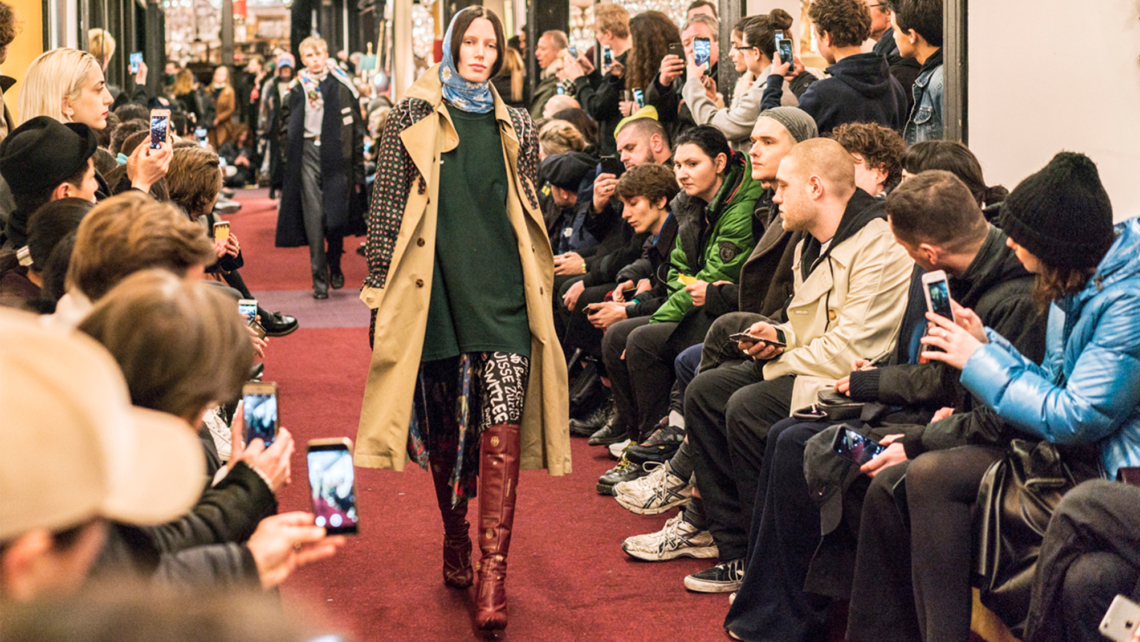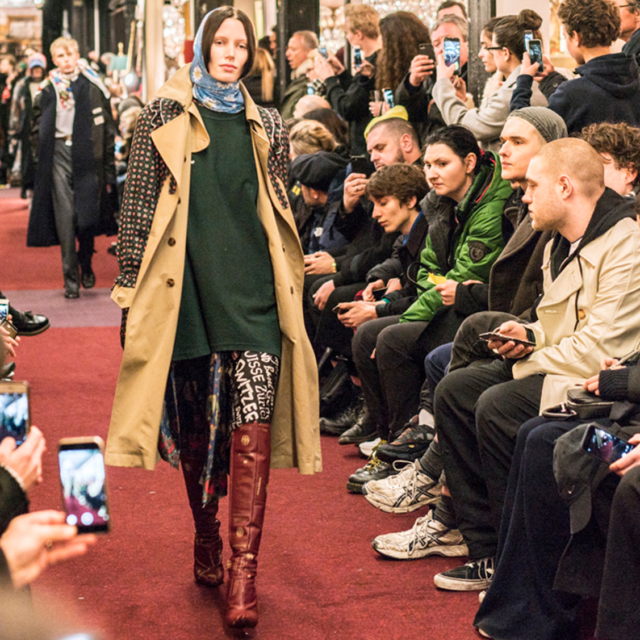I’m all for calling out wrongdoing and questioning everything, especially when it comes to a nearly $1,000 t-shirt. It’s important to have a discourse within the fashion sphere—it’s important for journalists and consumers to think critically and not blindly follow what a brand or the masses suggest is true or right or good.
I am not for the speed and readiness with which journalists, insiders, and Internet trolls alike were happy to cry, “Ding, dong, the witch is dead!” My Facebook feed was riddled with mocking comments, riffing off a quote from one of the article’s anonymous sources that read, “consumers aren’t stupid,” which essentially suggested that Vetements was an overpriced scam. Widely read fashion sites such as The Daily Front Row and even the highly respected site The Fashion Law were quick to post stories, many of which took Highsnobiety’s anonymous information as fact (in the spirit of transparency, Fashion Unfiltered also posted a story that suggested pronouncing Vetements “dead” was premature at best). But who the hell are these nameless, faceless sources? Why wouldn’t one of them go on the record? And did Highsnobiety even try to get a comment from Vetements? I asked writer Alec Leach and the site’s editorial director, Jian DeLeon just that via email yesterday. As of press time, no word back. But according to a representative for Vetements, no attempt was made to confirm the claims. It’s irresponsible to post a story tearing down a brand without giving the brand a chance to speak for itself. Furthermore, does no one remember that, in November, Vetements was proven, via the Lyst Index, to be the world’s fourth top-selling brand? Yes, in January, a similar index published by Business of Fashion suggested that Vetements’ buzz might be waning, but “dead”? I think not—we’re still talking about it, aren’t we?
Maybe I’ve gone soft over the last decade, but it seems that the online fashion “community” is very quick to tear down the very individuals and brands it builds up. Is everyone so bored and unhappy that we need to demolish hardworking creatives with vitriolic social media posts (take a look at the comments on Vetements’ Insta-statement) and regurgitated news stories? What is that helping other than boosting Internet trolls’ fragile egos?
Virgil Abloh, who this week was appointed as Vuitton’s new artistic director of menswear, was met with similar Internet aggression. He replaces his pal, Kim Jones, who has since been appointed to Dior Homme, where he dethroned Kris Van Assche, who is quite possibly going to Berluti, which parted ways with Haider Ackermann on Friday after just three seasons. Yes, all of that happened this month, and also Olivier Lapidus was ousted from Lanvin, because apparently, consumers didn’t want a “French Michael Kors.” I, for one, would love to see Ackermann at Lanvin—his draping and forward-thinking approach to romance feels very Jeanne Lanvin. Oh, and Riccardo Tisci’s going to Burberry, which is pretty exciting. Even so, that’s six designers either displaced or hired in the span of four weeks—a speed that signifies that fashion’s corporate powers view creatives as disposable.
Abloh’s appointment is historic as he’s now one of only two black designers at the helm of a major fashion house, the other being Olivier Rousteing at Balmain. It’s also controversial as he doesn’t have any formal fashion education and his own wildly successful brand, Off-White, is another one that’s rooted in hype and streetwear as well as celebrity (it’s also been accused of blurring the line between homage and copying, which fuels the controversy). Critics are divided, largely noting that, like Vuitton’s sold-out Supreme collaboration, Abloh’s wares will be highly profitable, but that it’s somewhat of a loss for the design community. I get that—it’s certainly not Lindsay Lohan at Ungaro, but it does feel a bit like, after Yeezy and Fenty and, I don’t know, Selena Gomez for Coach, celebrity is being favored over design talent that can push the aesthetic needle forward, and that merch now trumps innovation. However, that’s not to say that Abloh isn’t talented—and he is outrageously hardworking, terribly smart, and very, very popular. Remember that BoF profits list I mentioned earlier? Guess who was at the top of it? Yeah, Off-White. Furthermore, Abloh does push the conceptual needle forward—like Vetements, his work captures the zeitgeist he aims to address social, cultural, and political issues with his runway shows and his designs. His appointment makes perfect sense for Vuitton. Here’s why:
Louis Vuitton is not a heritage couture house that changed the face of high fashion. It is a historic luggage brand founded in 1854 that added ready-to-wear to its repertoire when it hired Marc Jacobs as its first creative director in 1997. Since its inception, the house has been based around catering to consumers’ changing needs and desires. Back in the day, it was about coming up with new forms of luggage as new forms of travel were popularized. Today, it’s about producing accessories and clothing (in that order) that appeal to consumers’ changing desires. Given the streetwear obsession (BoF claims it has taken over luxury), Abloh is going to make Vuitton boatloads of cash. Vuitton is part of a massive fashion conglomerate, LVMH, and Abloh’s appointment is smart business. “I see the future of Louis Vuitton as pretty bright,” GQ Style’s editor-in-chief, Will Welch, told Highsnobiety in a recent story (in which the sources actually went on the record). “Louis Vuitton simply reflects what the market wants. And the market for luxury fashion is currently not necessarily interested in refined fashion design that’s understandable for the chosen few, but in pieces that generate energy digitally and represent meaning to their generation.”








